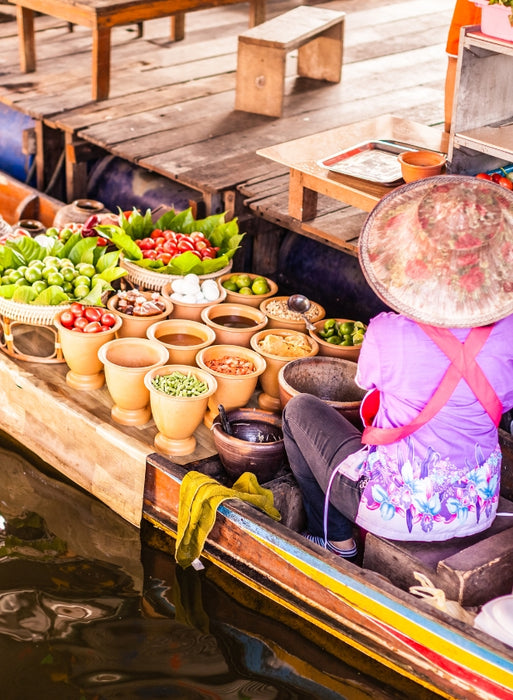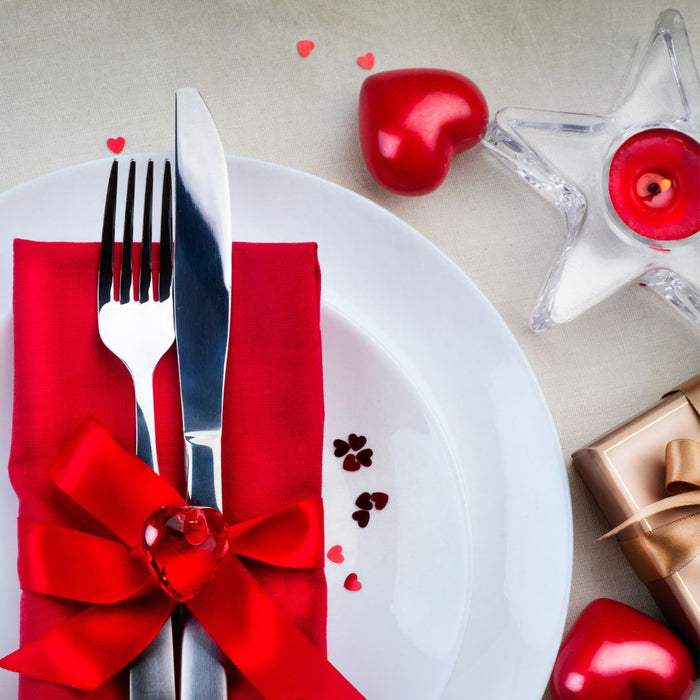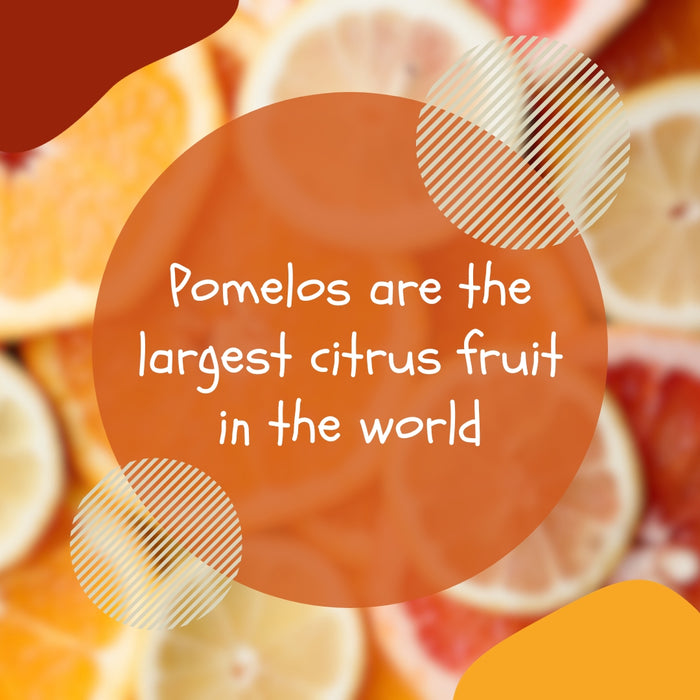While the moon gracefully watches over us from its celestial palace, across cultures and continents, humankind has found a delectable way of commemorating our shared fascination — Mooncakes. From their humble origins in China, mooncakes have transformed into a global phenomenon, crossing cultural boundaries and stealing hearts (and taste buds). Step aboard our culinary spaceship as we journey around the world exploring the rich tapestry of tastes, textures, and tales wrapped within mooncakes - the sweet embodiment of lunar legend and tradition. Buckle up food explorers; it's time for a trip to the moon— through its cakes!
There are many different types of mooncakes, including traditional and contemporary varieties. Traditional mooncakes are categorised by the Chinese region they come from and have unique characteristics in flavour, texture, and appearance. Some examples include Cantonese Mooncake (lotus paste with salted egg yolks), Shanghai Mooncake (shortcrust pastry with lotus paste and salted egg yolk), Suzhou Mooncake (flaky crust with pork filling), Teochew Mooncake (layered pastry with sweet fillings like yam or red bean), Yunnan-style Mooncake (savoury mooncake with ham filling or flower mooncake), Hokkien Mooncake (white skin with candied winter melon and tangerine peel filling), Hopia (small size with flaky skin and various fillings like mung bean or azuki bean paste). Contemporary mooncakes include Snow Skin Mooncake (no-bake, made from glutinous rice flour with various flavours and colours) and Ice Cream Mooncake (mooncake made with ice cream).
Traditional Mooncakes
Mooncakes are iconic treats that are synonymous with the Mid-Autumn Festival celebrated in many Asian cultures. These delectable pastries come in various shapes, sizes, and flavours, each reflecting the unique culinary traditions of different regions around the world. Traditional mooncakes can be categorised based on the Chinese region they originate from, with each type having its distinct flavours, textures, and appearances.
One of the most well-known and widely enjoyed types of traditional mooncakes is Cantonese Mooncakes. Originating from the Guangdong province of China and popularised by Cantonese cuisine, these mooncakes have become a worldwide favourite. Cantonese mooncakes typically have a golden-brown crust that is glossy and thin, with decorative patterns engraved on top. The fillings vary but frequently include lotus seed paste, salted egg yolks, red bean paste, mung bean paste, or even a combination called "five-kernel."
In Cantonese cuisine, lotus seed paste is particularly favoured due to its smooth texture and subtly sweet taste. The addition of salted egg yolks brings a savoury richness that beautifully contrasts with the sweetness of the filling. It's believed that salted egg yolks represent the full moon during the festival. Combined with other ingredients like melon seed paste or red bean paste, Cantonese-style mooncakes offer a delightful medley of flavours.
Traditionally, these mooncakes were baked to achieve a slightly crisp and flaky crust that contrasts with the lusciousness of the fillings inside. Today, you can find various creative variations such as snow skin mooncakes (no-bake) or ice cream mooncakes. However, it's the classic Cantonese style that remains most recognised and cherished.
When my family gathers to celebrate the Mid-Autumn Festival, we always make sure to include Cantonese mooncakes on our dessert table. The exquisite craftsmanship that goes into making these treats, from the intricate designs to the perfectly balanced flavours, never fails to impress us. It's a tradition that not only satisfies our taste buds but also brings us closer as we savour each bite and share stories passed down through generations.
Now that we've explored the realm of traditional mooncakes and dipped our taste buds into Cantonese flavour profiles, let's further explore a specific type within this category - Suzhou Mooncakes.
- Mooncakes are iconic treats that are synonymous with the Mid-Autumn Festival celebrated in many Asian cultures, and Cantonese Mooncakes are one of the most well-known and widely enjoyed types of traditional mooncakes. Cantonese mooncakes typically have a golden-brown crust that is glossy and thin, with decorative patterns engraved on top, and the fillings vary but frequently include lotus seed paste, salted egg yolks, red bean paste, mung bean paste, or even a combination called "five-kernel." When celebrating the Mid-Autumn Festival, Cantonese mooncakes are an excellent choice for dessert table as they offer a delightful medley of flavours that not only satisfies our taste buds but also bring families closer.
Cantonese Mooncakes
Cantonese mooncakes are undoubtedly the most recognisable and widely consumed type of mooncake worldwide. Hailing from Guangdong province in southern China, Cantonese cuisine has influenced and popularised these mooncakes across different cultures. They are characterised by their beautifully baked golden-brown crust, often adorned with intricate patterns on top.
What distinguishes Cantonese mooncakes is the variety of fillings available. The most prominent and favoured filling is lotus seed paste, known for its smooth and velvety texture with a mildly sweet flavour. This luscious paste is prepared by slowly cooking lotus seeds until they break down into a silky consistency before being combined with sugar and other ingredients to enhance the taste.
A distinctive feature of Cantonese mooncakes is the inclusion of salted egg yolks. These yolks provide a unique burst of savoury richness amidst the sweetness of the lotus seed paste. Salted egg yolks hold symbolic meaning during the Mid-Autumn Festival as they represent the full moon, which is believed to bring good luck and prosperity.
Apart from lotus seed paste, other popular fillings in Cantonese mooncakes include red bean paste, mung bean paste, or even a combination known as "five-kernel," which includes a blend of nuts and seeds like almonds, walnuts, melon seeds, sesame seeds, and pumpkin seeds. The wide range of choices caters to different palates, with each variation offering a distinctive flavour and texture.
Whether you enjoy the delicate sweetness of lotus seed paste, the earthy richness of red bean paste, or the complexity of the "five-kernel" blend, Cantonese mooncakes offer a delightful sensory experience that is celebrated during the Mid-Autumn Festival.
My first encounter with a Cantonese mooncake was during my visit to Hong Kong. As I took a bite, the flaky crust crumbled gently in my mouth, revealing the velvety smoothness of the lotus seed paste accompanied by a surprise burst from the salted egg yolk at its centre. The blend of sweet and savoury flavours danced on my palate, leaving behind an unforgettable taste that I continue to crave year after year.
Suzhou Mooncakes
When exploring the diverse world of mooncakes, one cannot overlook the unique and flavorful Suzhou mooncakes. Originating from the city of Suzhou in Jiangsu province, China, these mooncakes offer a delightful combination of both sweet and savoury options. Let's dive into the exquisite characteristics that define Suzhou mooncakes.
Suzhou mooncakes are known for their flaky crust and a wide range of fillings that cater to different tastes and preferences. The crust is made using a technique called "lard folding," where alternating layers of dough and lard are meticulously folded together to create a delicate texture. This results in a pastry that is both flaky and crisp when baked to perfection, providing a delightful crunch with every bite.
The fillings found in Suzhou mooncakes are incredibly varied, offering options for everyone's palate. There are traditional sweet fillings like lotus seed paste, red bean paste, or black sesame paste for those who prefer a touch of sweetness. These fillings are often complemented with ingredients such as melon seeds or nuts to add texture and enhance the flavours.
However, what truly sets Suzhou mooncakes apart is their savoury offerings. Suzhou is famous for its unique pork-filled mooncakes known as "Suzhou-style meat mooncakes." These savoury treats consist of a flaky pastry shell filled with fragrant minced pork mixed with spices and seasonings. The combination of succulent meat and crispy crust creates an extraordinary culinary experience that leaves a lasting impression.
Furthermore, Suzhou-style meat mooncakes also come in various regional variations, each offering its distinctive twist on the traditional recipe. For example, there is the Xianrou Su-style meat mooncake from Xi'an, which incorporates fragrant herbs and finely diced cured ham into the filling, giving it an extra depth of flavour. The Tianjin Goubuli Suzhou-style meat mooncake features a more robust filling with ingredients like minced beef, diced radish, and mushrooms.
The artistry of Suzhou mooncakes doesn't end with their exquisite flavours. These delectable treats often feature an intricate handcrafted design on the pastry's surface, showcasing the skills and creativity of the bakers. The designs can range from elegant floral patterns to symbols representing good fortune and prosperity, making them not only a culinary delight but also a feast for the eyes.
Whether you have a sweet tooth or prefer savoury delicacies, Suzhou mooncakes provide a delightful journey through flavours and textures. They continue to captivate mooncake enthusiasts worldwide with their exquisite craftsmanship and remarkable taste combinations.
Now that we have savoured the traditional delight of Suzhou mooncakes, let's shift our focus to another fascinating category: contemporary mooncakes.
- According to data from a survey conducted by the University of Hong Kong in 2021, traditional Cantonese-style baked mooncakes are still the most preferred type with about 65% respondents choosing them as their favourite.
- A study by National University of Singapore found that traditional egg yolk lotus seed paste mooncakes can contain up to over 70% of the recommended daily caloric intake amount, highlighting concerns over health implications.
- As per a report by Alibaba group on mooncake consumption trends in China in 2022, the demand for contemporary versions like snow skin mooncakes and ice cream mooncakes increased by around 20% as compared to previous years, reflecting changing consumer preferences.
Contemporary Mooncakes
As time progresses, traditions evolve and give birth to exciting variations. In recent years, contemporary mooncakes have gained popularity across different cultures, offering innovative twists on this beloved treat. Let's take a closer look at some of these modern interpretations that add a touch of creativity to the Mid-Autumn Festival.
Contemporary mooncakes showcase diverse culinary creations beyond the conventional baked or steamed ones. One popular variation is the snow skin mooncake, also known as ice skin mooncake or crystal mooncake. Originating from Hong Kong, these unique mooncakes deviate from the traditional baked crust by using a soft and chewy outer layer made from glutinous rice flour. This gives them a delicate "snow skin" texture similar to Japanese mochi.
Imagine biting into a snow skin mooncake filled with luscious durian-flavoured lotus seed paste, experiencing a creamy yet refreshing burst of flavour with each bite. Alternatively, one can indulge in other unconventional variations like green tea, mango, or even lychee-filled snow skin mooncakes. These contemporary flavours have captured the palates of mooncake lovers worldwide, especially those seeking a lighter and less oily treat.
Another contemporary twist on traditional mooncakes is the ice cream mooncake. These delightful treats combine the elements of ice cream and mooncakes, resulting in an irresistible fusion of flavours and textures. The outer layer can be made from various ingredients like chocolate, wafers, or cookies, providing a crisp contrast to the creamy ice cream filling. With flavours ranging from classic vanilla to innovative combinations such as matcha or black sesame, ice cream mooncakes offer a refreshing alternative that appeals to both children and adults alike.
Just like how each person has their unique preferences when it comes to selecting desserts, contemporary mooncakes cater to a variety of tastes by offering unconventional flavours and textures.
In addition to snow skin and ice cream mooncakes, there are numerous other contemporary variations emerging around the world. These include mochi mooncakes, which infuse traditional Japanese glutinous rice cakes with unique fillings like red bean or matcha; jelly mooncakes that provide a translucent and refreshing experience; and even alcoholic mooncakes infused with liquors like champagne or whiskey for those seeking an extra indulgence.
The rise of contemporary mooncakes showcases the versatility and creativity within this age-old tradition. It provides an opportunity for bakers to push boundaries and delight consumers with new flavour combinations while paying homage to the spirit of the Mid-Autumn Festival.
Snow Skin Mooncakes
Among the vast array of mooncakes, one unique variation that has gained popularity in recent years is the Snow Skin Mooncake. Unlike traditional mooncakes, which are baked, snow skin mooncakes are a no-bake delicacy that offers a delightful alternative. The name "snow skin" refers to the smooth and soft outer layer made from glutinous rice flour, giving it a texture reminiscent of Japanese mochi.
Snow skin mooncakes originated in Hong Kong and have since found their way into the hearts and taste buds of mooncake enthusiasts all over the world. With their vibrant colours and innovative flavours, these mooncakes have become a fresh and exciting addition to Mid-Autumn Festival celebrations.
The appeal of snow skin mooncakes lies not only in their unique texture but also in the wide variety of flavours available. From traditional fillings such as lotus seed paste, red bean paste, and pandan to more unconventional options like durian, matcha, or taro, there is something to suit every palate. The creativity and ingenuity displayed in crafting these delectable treats make them stand out among the traditional counterparts.
Imagine sinking your teeth into a delicate snow skin mooncake filled with luscious lotus seed paste that gently melds with the slightly sweet outer layer as you take each bite. The combination of textures and flavours creates a truly heavenly experience that leaves you craving for more.
As with any culinary creation, snow skin mooncakes have stepped beyond cultural boundaries and undergone various adaptations around the world. In addition to their popularity during the Mid-Autumn Festival, they have become sought-after desserts enjoyed throughout the year.
With their enticing appearance and diverse flavour options established, let's now venture into exploring the captivating flavour profiles and unique ingredients that further enhance these delightful snow skin mooncakes.
Flavour Profiles and Unique Ingredients
Snow skin mooncakes captivate not only with their vibrant appearance but also with their distinct flavours and unique ingredient combinations. The flavour profiles of snow skin mooncakes have expanded far beyond the traditional offerings, offering a fusion of both Eastern and Western influences.
One popular flavour is durian, known for its creamy texture and pungent aroma. Durian lovers appreciate the way the fruit's distinct flavour shines through in the delicate snow skin, providing a delightful taste sensation that encapsulates the essence of Southeast Asia.
Another intriguing option is matcha, which offers a subtle bitterness that complements the sweetness of the outer layer. Matcha enthusiasts relish the earthy undertones and vibrant green colour that evokes a sense of tranquillity and indulgence.
In recent years, contemporary twists on snow skin mooncakes have emerged, incorporating ingredients like salted caramel, black sesame, coconut, or even champagne. These innovative creations push the boundaries of tradition while maintaining the essence and spirit of these beloved treats.
Picture yourself savouring a snow skin mooncake filled with fragrant black sesame paste, where each bite releases a nutty richness that harmonises perfectly with the tender outer layer. It's an exploration of not only flavours but also textures that leave you pleasantly surprised and eagerly anticipating your next bite.
Flavour profiles can vary greatly depending on personal preferences and regional influences. Each bakery or chef may add their own artistic flair to create signature snow skin mooncakes that cater to unique tastes, ensuring there is always something new to discover within this exciting mooncake variety.
Exploring the diverse flavours and unique ingredients found in snow skin mooncakes is akin to taking a culinary journey around the world. With every bite, you embark on an adventure that combines cultural traditions with innovation, enticing your senses and broadening your understanding of how mooncakes can be transformed into something truly exceptional.
Cultural Significance and Celebrations
Mooncakes hold a significant cultural importance in various countries, especially in East Asia, where they are closely associated with the Mid-Autumn Festival. This festival is celebrated on the fifteenth day of the eighth month in the lunar calendar, usually falling in September or October. The traditions and festivities surrounding the Mid-Autumn Festival vary across different cultures, but their common thread lies in honouring the moon and expressing gratitude for a bountiful harvest.
In Chinese culture, the Mid-Autumn Festival is considered one of the most important traditional holidays. Families gather together to celebrate this joyous occasion by sharing food, stories, and admiration for the beautifully illuminated full moon. It is believed that during this time, the moon is at its fullest and brightest, symbolising unity, harmony, and reunion. As a result, mooncakes feature prominently as an essential part of the celebrations.
The significance of mooncakes during the Mid-Autumn Festival can also be seen in Vietnam's cultural customs. Here, the festival is known as Tết Trung Thu or Children's Festival. Children participate in vibrant processions while carrying colourful lanterns shaped like animals or characters from folklore. Family members come together to enjoy delicious mooncakes and offer prayers to deities for blessings and good fortune.
Cultural Significance of Mooncakes:
- Symbolise unity, harmony, and reunion
- Recognise abundance and a bountiful harvest
- Express gratitude to deities
- Emphasise family traditions and togetherness
The act of sharing mooncakes holds deep cultural meaning as well. Gifting these delicacies to family members, friends, colleagues, and business partners is a gesture signifying unity and goodwill. Exchanging elaborate mooncake gift boxes has become a tradition in many communities during this festive season.
To put it in perspective, the act of sharing mooncakes during the Mid-Autumn Festival is akin to sharing a slice of cake on a birthday. It represents warmth, love, and celebration, fostering stronger bonds among families and communities.
Throughout history, mooncakes have also served as vehicles for cultural expressions and stories. Intricate designs and patterns are often imprinted on the surface of traditional mooncakes, each carrying its own symbolism. These designs can represent auspicious meanings like unity, longevity, prosperity, and fertility.
For instance, in Cantonese-style mooncakes, a smooth exterior with decorative patterns symbolises beauty and elegance. Some may bear the imprint of a rabbit due to the popular folklore tale about the Moon Goddess Chang'e and her companion, the Jade Rabbit.
Embracing different types of mooncakes around the world allows us to appreciate the rich cultural heritage embedded within these delectable treats. By learning about their significance and participating in traditional celebrations, we not only indulge in delightful flavours but also gain a deeper understanding of diverse cultures.
Click to Shop our range of Mooncakes




